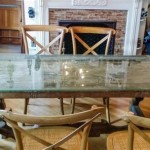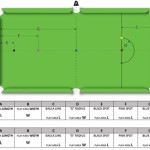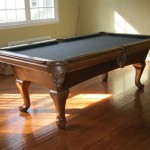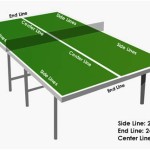Black Tree Stump Coffee Table: A Natural and Modern Accent
The black tree stump coffee table represents a compelling intersection of rustic charm and contemporary design. It leverages the innate beauty of natural wood while incorporating a modern aesthetic through the application of a black finish. This combination creates a unique furniture piece suitable for a variety of interior design styles, from minimalist to bohemian.
The allure of a tree stump coffee table lies in its organic form, which contrasts sharply with mass-produced, uniform furniture. Each stump, by its very nature, is unique, showcasing individual grain patterns, knots, and subtle variations in shape. The black finish accentuates these details, adding depth and visual interest while providing a sophisticated and grounding element to the space.
The process of creating a black tree stump coffee table involves several key steps. Initially, a suitable tree stump is selected. The type of wood used significantly impacts the final product's durability, weight, and aesthetic appeal. Commonly used woods include walnut, oak, cedar, and reclaimed wood. Each wood possesses distinct characteristics that contribute to the table's overall appearance and longevity.
Once the stump is chosen, it undergoes a crucial drying process. This process is essential to prevent cracking and warping after the table is finished. The drying method can vary, from air-drying over several months to kiln-drying, which accelerates the process but requires careful control to avoid damaging the wood. The moisture content must be reduced to an acceptable level to ensure the table's stability over time.
After drying, the stump is prepared for finishing. This typically involves removing bark, sanding the surface to create a smooth texture, and filling any significant cracks or imperfections with epoxy resin. The resin can be tinted to match the wood or left clear to create a contrasting effect. The sanding process is crucial for achieving a uniform surface that will accept the black finish evenly.
The application of the black finish is a critical aspect of the process. The type of finish used can significantly impact the table's appearance and durability. Popular choices include stains, paints, and lacquers. Stains penetrate the wood, enhancing the grain pattern while adding color. Paints provide a more opaque finish, concealing the wood grain. Lacquers offer a durable, protective coating that can be applied in various sheens, from matte to high gloss.
The choice of finish depends on the desired aesthetic and level of durability. A matte black finish can create a modern, understated look, while a glossy black finish can add a touch of glamour. The application method also plays a crucial role in the final result. Spraying typically provides the most even and consistent coverage, while brushing or wiping can create a more textured effect.
Finally, the table may be sealed with a topcoat to protect the finish from scratches, stains, and moisture. The sealant can be wax, polyurethane, or other protective coatings. The choice of sealant depends on the type of finish used and the desired level of protection. Proper sealing is essential for ensuring the table's longevity and maintaining its appearance over time.
Key Point 1: Material Selection and Preparation
The success of a black tree stump coffee table hinges on the careful selection and preparation of the wood. The type of wood used directly impacts its durability, weight, and aesthetic appeal. Hardwoods like oak and walnut are known for their strength and resistance to wear, making them ideal choices for high-traffic areas. Softwoods like cedar offer a lighter weight and a distinct aroma, but may be more susceptible to scratches and dents. Reclaimed wood provides a unique character and a sustainable option.
The drying process is equally crucial. Improperly dried wood is prone to cracking and warping, which can compromise the table's structural integrity and appearance. Kiln-drying offers a controlled and accelerated drying method, but requires expertise to avoid damaging the wood. Air-drying is a more traditional method that allows the wood to dry naturally over time, but it requires a longer waiting period.
The preparation of the stump involves removing the bark, sanding the surface, and filling any imperfections. The bark removal process can be done manually or with specialized tools. Sanding ensures a smooth surface that will accept the finish evenly. Epoxy resin is commonly used to fill cracks and knots, creating a seamless and durable surface. The choice of resin color can either match the wood or create a contrasting visual element.
Key Point 2: The Significance of the Black Finish
The black finish transforms the rustic tree stump into a modern and sophisticated piece of furniture. The color black offers a sense of grounding and stability, providing a visual anchor in the room. It also creates a dramatic contrast with lighter colors and textures, making the table a focal point.
The type of black finish used can significantly alter the table's aesthetic. A matte black finish creates a modern, understated look that blends seamlessly with minimalist decor. A glossy black finish adds a touch of glamour and elegance, reflecting light and creating a sense of depth. A textured black finish, such as one achieved with a wire brush or sandblasting, adds tactile interest and a rustic charm.
The application method of the black finish is equally important. Spraying provides the most even and consistent coverage, creating a smooth and uniform surface. Brushing or wiping can create a more textured effect, highlighting the wood grain and adding to the table's rustic appeal. The number of coats applied also affects the depth and richness of the black color.
Key Point 3: Versatility and Placement in Interior Design
The black tree stump coffee table is a versatile piece that can be incorporated into a variety of interior design styles. In a minimalist setting, it provides a natural and organic element that contrasts with clean lines and neutral colors. In a bohemian setting, it complements eclectic patterns and textures, adding a touch of rustic charm.
The placement of the table is crucial for maximizing its impact. It can be used as a traditional coffee table in a living room, providing a surface for drinks, books, and decorative items. It can also be used as a side table in a bedroom or study, adding a natural and organic touch to the space. In a covered outdoor area, it can serve as a unique and eye-catching accent piece.
The size and shape of the table should be carefully considered in relation to the surrounding furniture and space. A larger stump can serve as a statement piece, while a smaller stump can be used in tighter spaces. The shape of the stump can also influence its placement and functionality. A round stump provides a soft and organic feel, while a square or rectangular stump offers a more structured and modern look.
Ultimately, the black tree stump coffee table is more than just a piece of furniture; it is a statement of individuality and a celebration of natural beauty. Its unique form, combined with the sophistication of a black finish, makes it a compelling addition to any interior space.

Large Tree Stump Side Tables 1219 Black Bertuhome

Modern Tables Side Table 0318 Espresso Stumps Bertuhome

71475 By Uma Brown Teak Wood Handmade Live Edge Slice Tree Stump Living Room Coffee Table With Black Metal Base 46 X 27 15 De Cor Furniture

Coffee Table Timber Artwood

Large Tree Stump Side Tables 1219 Black Bertuhome

Large Tree Stump Side Tables 1219 Black Bertuhome

Tree Stump Table Burnt Wood Coffee Cabin Log Mid Century Nightstand Space Saving End Stool Garden

Teton Charred Black Solid Wood Accent Table

Tree Stump Table Burnt Wood Coffee Cabin Log Mid Century Nightstand Space Saving End Stool Garden

Organic Black Stump Low Table Design Mix Gallery








